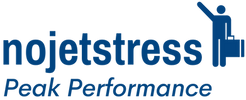Wearable Tech And the Frequent Flier, Are You Ready !
- Christopher Babayode

- May 30, 2014
- 3 min read
The analogy between Athletes and Frequent Fliers is a strong one to make, but a valid one when you consider how grueling global business travel can be. Athletes take the time to train for fitness and competition. Frequent fliers, especially road warriors should take time to train for fitness and the journey. The serious athlete is well aware of the value of feedback, to that end they employ a coach and technology to keep them progressing and competitive. While frequent fliers may not have access to a coach they can leverage technology to help them stay journey fit and healthy. This is made even easier today with the explosion of
Wearable Technology. Wearable technology, specifically of the health monitoring variety means any frequent flier can get real-time feedback on their health status and adjust accordingly.
What was once the preserve of the elite athlete and out of reach and price range of your average person has now become available to all and sundry. In this respect we are witnessing the sexing up of the humble pedometer. Wearable technology (wearable tech for short) comes in all shapes and sizes with simplicity and sophistication in equal measure. Wearable tech gadgets can do anything from helping you reach daily physical activity goals to measuring sleep quality and duration, track water consumption, calorie consumption, weight gain or weight loss, as well as power napping and helping you monitor your exposure to ionizing radiation.
The wonders of wearable tech are made possible because of advances in technology and the simplification of the UI (User Interface) all you need is a smartphone and your chosen gadget that is equally easy to wear on the wrist, in the pocket or around the neck and you are all set. Bluetooth and plug and play syncing options will do the job of keeping track of your progress.
All of these gadgets are available and useful to the frequent business flier and can make a worthwhile contribution to staying healthy while jetting around the world and encountering different time zones. In addition to this new crop of gadgets there are also some other items on the horizon or that have been around for a while which qualify as wearable tech which are also indispensable to healthy fliers. Include magnetic insoles which massage your meridian points on the soles of your feet in this category although you might want to call it low-tech wearable tech. You can also include a soon to be released power napping eye mask which will allow you to power nap to perfection, its timer wakes you by simulating a natural sunrise wake sequence. Another low-tech offering (yet to be released) is a silicon wristband which monitors pollution you are exposed to. Fliers concerned about Aero-toxic Syndrome and fume events when they fly could for instance use the band to monitor exactly what they are exposed to.
The options to get valuable feedback through wearable tech are increasing with the uses technology is being put to, it is only a matter of time before its use becomes the rule for frequent fliers instead of the exception. Apple’s reported acquisition of Beats Electronics seems to be drawing criticism from the financial markets, but it could just be that Apple has acquired the last piece of its technology puzzle before it launches the iWatch. Whether Apple can turn the iWatch into that must-have wearable tech gadget we didn’t know we needed remains to be seen. In the meantime frequent fliers without wearable tech will seem like astronauts in space without space suits, future generations will wonder how we ever managed without it.
Works Cited
Wearable Technology, wikipedia.com, Wikipedia Foundation, Web, Accessed May 18th 2014.
Steven G. O’Connell , Laurel D. Kincl , and Kim A. Anderson, Silicone Wristbands as Personal Passive Samplers, Environ.Sci.Technol., 2014, 48 (6), pp 3327-3335, Publication date (Web) February 18, 2014. Accessed May 18th 2014.
Mark DeCambre, Beats might just be the best platform for Apple’s wearable tech, qz.com, May 12, 2014, Web. Accessed May 18th 2014.




Comments